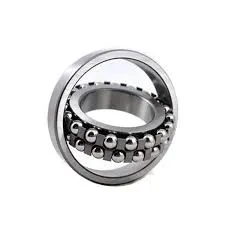
dets. . 29, 2024 15:56 Back to list
Comparison of Thrust Bearings and Ball Bearings in Mechanical Applications
Thrust Bearing vs. Ball Bearing A Comprehensive Comparison
When it comes to the world of machinery and mechanical components, bearings serve as vital players in ensuring smooth operation and longevity. Two prominent types of bearings are thrust bearings and ball bearings. Although they are both crucial for the functioning of various machines, they serve different purposes and exhibit distinct characteristics. In this article, we will explore the differences, applications, and advantages of thrust bearings versus ball bearings.
Understanding the Basics
Ball Bearings Ball bearings are one of the most common types of bearings used in a wide array of applications, from household appliances to heavy machinery. They consist of balls that are situated between two rings, known as inner and outer races. The primary function of ball bearings is to reduce friction between parts that rotate around each other. They are designed to handle radial loads—forces that are perpendicular to the shaft of the bearing.
Thrust Bearings Thrust bearings, on the other hand, are specifically designed to support axial loads, which are parallel to the shaft. They are typically used in applications where there is a need to withstand heavy loads in one direction, such as in engines, gearboxes, and various industrial machinery. Thrust bearings can take several forms, including thrust ball bearings and thrust roller bearings, and are assembled with either ball or roller elements to accommodate the load.
Key Differences
1. Load Direction One of the most significant differences between thrust bearings and ball bearings lies in the type of loads they can support. Ball bearings primarily handle radial loads, whereas thrust bearings are designed to accommodate axial loads.
2. Design Structure The structure of these bearings also differs. Ball bearings are constructed with a series of spherical balls along with inner and outer raceways, providing a rolling motion that reduces friction. Thrust bearings feature either a set of balls or rollers placed between flat or grooved surfaces to support axial loads effectively.
thrust bearing vs ball bearing

3. Usage Scenarios In terms of applications, ball bearings are ubiquitous across various sectors, including automotive, aerospace, and consumer electronics. They are commonly found in motors, wheels, and fans. Thrust bearings, however, are used in more specialized environments, such as in the vertical shafts of wind turbines, for pillow block arrangements, and in gearboxes that experience significant axial loads.
Advantages
1. Ball Bearings The advantages of ball bearings include their ability to handle high speeds and their effectiveness in reducing friction. They are versatile and can be used in diverse applications, making them a popular choice in many industries. Their relatively simple design leads to lower manufacturing costs and easy maintenance.
2. Thrust Bearings Thrust bearings excel in applications requiring the management of axial loads. They have a high load-carrying capacity and can accommodate larger loads without stretching or deforming. The design of thrust bearings allows them to operate smoothly even under harsh conditions, such as high temperatures or in the presence of contaminants.
Conclusion
Both thrust bearings and ball bearings play crucial roles in modern machinery, but they are tailored for different applications based on their unique designs and functionalities. Ball bearings are ideal for situations needing support for radial loads, where high speeds and minimal friction are critical. Thrust bearings, conversely, are indispensable when significant axial loads come into play, ensuring that the machinery operates efficiently and reliably.
Selecting between thrust and ball bearings ultimately depends on the specific requirements of the application at hand. Understanding the distinctions between these two types of bearings enables engineers and designers to make informed decisions that enhance the performance, reliability, and lifespan of mechanical systems. Whether you are designing a new machine or maintaining existing equipment, appreciating the differences between thrust and ball bearings can lead to more effective and sustainable engineering solutions.
Latest news
-
Grooved Ball Bearing Design and Functionality
NewsJun.04,2025
-
Concrete Mixer Bearing Load Capacity Testing
NewsJun.04,2025
-
6004 Bearing Dimensions in Robotic Joint Designs
NewsJun.04,2025
-
Advantages of Single-Row Deep Groove Ball Bearings
NewsJun.04,2025
-
Applications of Deep Groove Ball Bearings in Automotive Systems
NewsJun.04,2025
-
Innovations in Bearing Pressing Machine Design
NewsJun.04,2025
